The Latest from TechCrunch |  |
| News Corp. Exploring MySpace CEO Options Posted: 21 Apr 2009 03:01 PM PDT
And now it may be time for him to step down. He and co-founder Tom Anderson are reportedly making an aggregate of $30 million/year under a contract signed in 2007. That contract terminates this October and must be renegotiated soon. But MySpace is under a new boss, Jonathan Miller, who joined News Corp. last month as CEO of Digital Media. MySpace is one of his assets, and he may be inclined to make a change in management. DeWolfe is also dealing with the recent departure of three of his top executives, and more may be on the way. A top headhunting firm is starting to scour for possible replacements. We’ve spoken directly with one person who was contacted by the firm and asked to give recommendations for possible candidates. One source close to News Corp. says that no firm has been officially retained to do a search, but won’t comment further or make any explanation as to why calls are being made. One thing DeWolfe has always had is a close working relationship with News Corp. CEO Rupert Murdoch, who has protected him in past conflicts with other News Corp. execs. But that very relationship has been a thorn in the side of his various managers over the years. There are people at News Corp. gunning to knock DeWolfe out of the company. The question is whether Murdoch and Miller will protect him. And, of course, there is always the chance that DeWolfe will simply leave the company. It’s high growth days are likely behind it, a new type of manager may be better suited to running the company going forward. Crunch Network: CrunchGear drool over the sexiest new gadgets and hardware. |
| Carol Bartz Still Looking For Wow, Drops F-Word During First Quarter Earnings Conference Call. Posted: 21 Apr 2009 02:37 PM PDT Yhoo 1 Q09 Earnings Presentation Final View more presentations from guestdddfda4. After spending a lot of time speaking with Yahoo employees, partners, and customers, new CEO Carol Bartz has come to realize the importance of giving consumers a “Wow experience,” she told investors in the first quarter conference call. But they have yet to experience that from owning the stock. Yahoo reported a 13 percent decline in revenues for the first quarter of 2009 to $1.6 billion, while net income dropped 78 percent to $118 million. Google, in comparison, last week reported a 3 percent decline in first quarter, but was able to manage a 9 percent increase in net income. Diving into the numbers, search advertising revenues on Yahoo sites declined 3 percent to $399 million, while display advertising on Yahoo sites declined 13 percent to $371 million. The biggest decline, however, was from affiliate ad network revenues, which were down 16 percent to $511 million. Page view growth also slowed down to 8 percent from 20 percent growth a year ago and 15 percent growth during the fourth quarter. On the search side, query volume grew but revenue-per-search declined as commercial queries and click-through rates saw weakness. Bartz puts a positive spin on Yahoo’s results and claims that it is actually gaining share of advertising dollars compared to the overall industry:
Bartz announced another round of layoffs, which will affect 5 percent of the workforce, or about 675 people (out of 13,500). The cuts will take place within the next two weeks. Bartz also indicated during the conference call that she is focusing on the products and properties which drive the bulk of Yahoo’s traffic and revenues, including the homepage, Yahoo Sports, Yahoo News, Yahoo Finance, Yahoo Mail, and Yahoo Mobile. Her three-pronged strategy is to globalize the platform, build “fantastic products to deeply engage users, and to improve the return from its advertising platforms. Asked about discussions with Microsoft, Bartz had no comment. Later on she did manage to drop the F-word, though (but quickly apologized for the slip). Crunch Network: MobileCrunch Mobile Gadgets and Applications, Delivered Daily. |
| Amazon Jumps Into The HD Stream As Well. Doesn’t Really Make A Splash. Posted: 21 Apr 2009 02:28 PM PDT
The new HD option for Amazon Video On Demand is available starting today for some 500 movies and television shows. And the HD content will work with the set-top boxes Amazon streams to including the Roku and TiVo Series 3 devices. In addition, Amazon is launching On Demand on select Panasonic televisions today as well. So Amazon is getting into the same HD streaming market that everyone else is. Unfortunately, there doesn’t seem to be any real differentiating factor from the other services. Sure, it’s nice for people who already use Amazon On Demand, but there is no real reason to switch to use it if you are already using one of the other services. Though, it is nice that the service is available on more devices than say, iTunes or Xbox Live. But the prices, for example, are the same as iTunes ($3.99 to $4.99 to rent an HD movie — and $2.99 to buy an HD show). And the content looks to be pretty much the same as well. Amazon, in its press release, is touting the availability of the newly released Frost/Nixon. Well, I just watched it last night, in HD, on my Apple TV. And it’s content that’s the main problem for all of these services. Apple has been expanding its HD offerings, but still only has a few hundred, several months after launching. Xbox Live’s content is the same way. Apple just rolled out the ability to buy (rather than rent) HD movies, and that is so far restricted to just a handful of movies. 500 HD titles is a good number for Amazon to launch with, but it’s a drop in the bucket of the 40,000 On Demand titles it offers.
Crunch Network: MobileCrunch Mobile Gadgets and Applications, Delivered Daily. |
| Google Analytics API Now In Public Beta, Desktop Reporting Takes Stats Offline Posted: 21 Apr 2009 01:58 PM PDT
When Google announced a great deal of updates to Google Analytics last October, the company already said the API was ‘coming soon’, but obviously it took them another 6 months to effectively start rolling out. With the Google Analytics data API, developers can develop client applications that access Google Analytics data and subsequently present it in new, innovative ways. By combining a wide variety of metrics and dimensions, an API-based client application can deliver custom reports, more refined data or new visualizations that in turn provide new ways to analyze the performance of websites and web applications. From the blog post announcing the release:
One of the applications that was built using the API and which is being featured on the launch website is Polaris, one of the products built by Desktop Reporting, which aims to bring Google Analytics to the desktop. The full suite, a full-featured Adobe AIR-powered GA reporting tool called Dopac, is still a couple of weeks away from launching, but Polaris already brings some of the data to the desktop in the form of cross-platform widgets and is definitely worth checking out. There are 8 standard reports available, and the app is completely free if used for only one website (an annual $15 fee is required to extend it to more websites). It’s targeted to marketers, project and account managers who are looking for an intuitive way to check out basic stats for a website they’re tracking from their desktops. Desktop Reporting was pioneered by just one guy, Nicolas Lierman from Belgium. (Disclosure: the startup was one of the presenting finalists at my conference Plugg, held last month in Brussels) Lierman has been working on bringing Google Analytics offline for quite a while (in fact, we covered one of the first iterations of his desktop application back in September 2007), and besides the full reporting suite and the now launched Polaris, he also has two other GA-related products in the pipeline (check his website for more info). Also worth chekcing out is Actual Metrics’ Android application for Google Analytics. It will be interesting to see what other third-party developers come up with now that the API is finally out there. Google already put some examples online in this gallery, but if you have anything cool to announce in the future, you know where to find us. The company also set up a Google Analytics API Notify email group so you can get the key announcements on feature updates, code changes and other service related news that relate to the API that way, and / or you can join the Google Analytics APIs Group.
Crunch Network: CrunchGear drool over the sexiest new gadgets and hardware. |
| Google Profiles Finally Have A (Big) Purpose: Appearing In Google Search Results Posted: 21 Apr 2009 01:00 PM PDT
After over a year of sitting in relative obscurity, Google Profiles are finally getting their due. Beginning today Google search queries for names will now feature a section dedicated to Google Profile results at the bottom of every page. These profiles allow people to fill out their basic information, like current employer and links to various web presences, without having to maintain a personal website and try to struggle to maintain a high page-rank. This is huge news for several reasons. For one, Google is beginning to encroach on a territory long dominated by LinkedIn. For years, when I’ve wanted to learn about someone’s basic information and web presences (assuming they weren’t in CrunchBase), I’ve generally looked at LinkedIn, where many people have at least filled out their basic background info, a website, and some contact information. Google Profiles may not have LinkedIn’s social graph, but as a web directory they’ll work just fine, and they’ll have the benefit of appearing on the front page of search results every time. 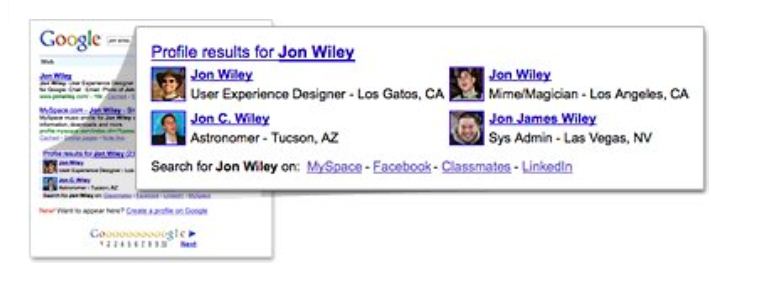 It’s also obviously huge news to the countless people who happen to share the same name as a popular athlete, celebrity, or business person. Take former TechCrunch writer Mark Hendrickson for example, who happens to share a name with Mark Hendrickson, a pitcher for the Baltimore Orioles who dominates most of the front page of search results for the name. Under the new system, both Marks would be listed as thumbnails toward the bottom of the first page of results. Maybe. Google is allocating four thumbnail spots to these profiles at the bottom of search results - anyone who doesn’t appear in those four spots can be found by clicking a link to show more results. Obviously, nabbing one of these four thumbnail spots is going to very desirable to some people. But true to Google form, the choices for the thumbnails are driven by a mysterious algorithm. Google wouldn’t offer too many details on how the algorithm works, other than that it will heavily favor profiles that are ‘complete’ - in fact, when you fill out your profile it will indicate if Google has deemed it ‘complete’ enough to appear as a thumbnail. But even if you get the OK, there’s no guarantee that you’ll ever get one of the four spots. 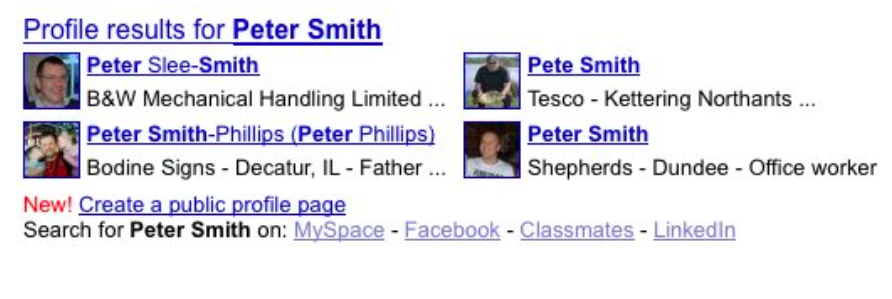 Unfortunately, there are some issues with the way Google profiles are named that may deter some users from taking advantage of them. Google is intent on using the same ‘name space’ as Gmail - that is to say, if my Gmail account was jason@gmail.com, my Google Profile would be found at http://www.google.com/profiles/Jason. This is primarily to prevent confusion, but it raises privacy concerns for anyone who isn’t too keen on having their Email address publicly available on the internet (you can always opt out, but then you’re forced to create a new account if you want to appear in the listings). Update: You can also choose to substitute a string of numbers for your profile URL instead of your account name, though this obviously wouldn’t be ideal for business cards or other methods of sharing. You can register a new account and get a recently-launched vanity listing , but nearly all of the ‘good’ names have been registered by Gmail users over the years so your profile will likely wind up looking something like jason83472. Despite these frustrations, this is a new feature that I suspect will prove immensely popular - and important. To help promote it, Google is going to start routing any queries for the name ‘me’ (a play on the phrase “Google me..”) to a link to create a new Google profile. Crunch Network: CrunchBoard because it’s time for you to find a new Job2.0 |
| Should Ad Networks Pay Publishers For Stolen Content? The Fair Syndication Consortium Thinks So. Posted: 21 Apr 2009 12:07 PM PDT
As newspapers and other publishers watch their revenues diminish, one common refrain among them is that maybe they should somehow go after Google or Yahoo for aiding and abetting the destruction of their businesses and sometimes the wholesale theft of their content. We’ve seen how the Associated Press wants to handle this: by aggressively going after anyone who even borrows a headline. Today, a consortium of other publishers including Reuters, the Magazine Publishers of America, and Politico are taking a more measured approach, but one which will no doubt still be controversial. They are forming the Fair Syndication Consortium, which is the brainchild of Attributor, the startup which tracks the reuse of text and images across the Web for many of these same publishers. The Fair Syndication Consortium is initially trying to address a legitimate problem on the Web: the proliferation of splogs (spam blogs) and other sites which do nothing more than republish the entire feed of news sites and blogs, often without attribution or links. There are tens of thousands of these sites, perhaps more. Rather than go after these sites one at a time, the Fair Syndication Consortium wants to negotiate directly with the ad networks which serve ads on these sites: DoubleClick, Google’s AdSense, and Yahoo primarily. For any post or page which takes a full copy of a publisher’s work, the Fair Syndication Consortium thinks the ad networks should pay a portion of the ad revenues being generated by those sites. I know a little bit about this because in January I was invited to a meeting at the A.P.’s headquarters with about two dozen other publishers, most of them from the print world, to discuss the formation of the consortium. TechCrunch has not joined at this time. Ironically, neither has the A.P., which has apparently decided to go its own way and fight the encroachments of the Web more aggressively (although, to my knowledge, it still uses Attributor’s technology). But at that meeting, which was organized by Attributor, a couple slides were shown that really brought home the point to everyone in the room. One showed a series of bar graphs estimating how much ad revenues splogs were making simply from the feeds of everyone in the room. (Note that this was just for sites taking extensive copies of articles, not simply quoting). The numbers ranged from $13 million (assuming a $.25 effective CPM) to $51 million (assuming a $1.00 eCPM).
Then they put up a slide with a pie chart showing which ad networks were serving ads on all of the abusive sites. It turns out a full 94 percent of the sites in question were serving ads from three ad networks: DoubleClick (45 percent), Google AdSense (24 percent), and Yahoo (24 percent).
Go after those three ad networks, and the majority of the problem could be solved. There is certainly precedent for this type of approach. Look at YouTube’s Content ID program, which splits revenues between YouTube and the media companies whose videos are being reused online. Except this proposal would take money that would otherwise be distributed to the splog sites themselves, and give a portion of it to the publisher as an automatic syndication fee without the consent of the site owner. How would the ad networks know that the content in question belongs to the publisher? Attributor would keep track of it all and manage the requests for payment. The consortium is open to any publisher to join, including bloggers. (Attributor runs a free version of its service called FairShare to give publishers a sense of how much of their stuff is being copied without attribution). It is certainly better than sending out thousands of takedown notices, but many issues still need to be worked out. I’ve seen some of the data for TechCrunch, and there is no doubt that Attributor catches a lot of abuse, not fair use. But some of the sites that fall within Attributors net might still fall within fair use. For instance, I can imagine, a short post two or three paragraphs long being copied in its entirety and being surrounded by commentary. (Although, a minimum 125-word-count limit and exclusion of content clearly in quotes is meant to address such a scenario). Also, I am not sure that demanding payment is the way to go. For the most part, a link and attribution is good enough for us. But if the Fair Syndication consortium gets the ad networks on board and they take a conservative approach to asserting copyright, we might take another look. What do you think, should we join? Crunch Network: CrunchBoard because it’s time for you to find a new Job2.0 |
| Go To Google Similar Images, Hit “Similar,” Find Live Search Posted: 21 Apr 2009 11:50 AM PDT
A lot of commenters pointed it out to us yesterday, and naturally, Microsoft reached out today to let us know the same thing with what might as well have been a big, loud “FIRST!” But it’s true, Microsoft rolled out the feature on December 1 of last year. So how does it stack up? I ran the same test I did yesterday with Google Similar Images, a query for “Apple.” Perhaps that’s a bit unfair to Microsoft since that is a chief rival, but the results were solid. The silver Apple logo similar image search returned silver apples across the board.
The colorful Apple similar image search was a little more uneven than Google’s results, but that’s just being kind of picky.
The apple fruit similar image search worked well, just as Google’s did.
I took the test of Microsoft’s tool a bit farther and did a search for “Daniel Day-Lewis,” my favorite actor. I wanted to find a picture of him as Bill the Butcher from Gangs of New York in particular. I found one, hit the similar images link, and aside from one odd picture of Penelope Cruz (which I can certainly forgive) and a few of Day-Lewis in There Will Be Blood (where he has a similar look), got some good results. So yes, Microsoft, which gets a lot of flack for borrowing features from rivals, appears to have had one of its own borrowed from Google here. Of course others in the search space, such as like.com, have been doing this for a while. “Imitation is the greatest form of flattery and all that,” quipped a Microsoft spokesperson. Indeed. Crunch Network: MobileCrunch Mobile Gadgets and Applications, Delivered Daily. |
| Windows Live To Add More Social Network Partners (Digg, MySpace, Facebook, Last.fm And More) Posted: 21 Apr 2009 10:39 AM PDT
Today Microsoft will announce a number of new data partners, including Facebook, Digg, Last.fm, SmugMug, TypePad and Yandex. This is, apparently, the first time Facebook feeds can be pulled into a third party service (we talked about this last month). The full list of new partners is below. Also, Microsoft has made some headway on their Contact Interchange product that pulls in friend data from various social networks (we questioned whether it violated the Facebook terms of use last year). Today Microsoft will announce the addition of MySpace, Hi5 and Tagged to the product, joining Facebook and LinkedIn. This is a two way relationship that allows users to pull their Windows Live contacts into those services as well. The full list of new partners: MSN: Microsoft Network Current Partners:
More screenshots:
Crunch Network: MobileCrunch Mobile Gadgets and Applications, Delivered Daily. |
| SF Mayor Gavin Newsom Tweets His Way Into The Race For California Governor Posted: 21 Apr 2009 10:30 AM PDT
Remember when the hippest way to blaze onto the campaign trail was an appearance on The Daily Show? No more. This morning San Francisco mayor Gavin Newsom announced his bid for California Governor via Twitter, instantly sending his new campaign video (embedded below) to his 270,000 followers. No doubt inspired by President Obama’s successful campaign over the last two years, Newsom is looking to social media to help connect with voters. Alongside this morning’s Tweet, Newsom also sent out a message to his 37,000 Facebook fans. I suspect Newsom will be able to strike the same chords with an online campaign as President Obama did - he’s relatively young and a Democrat, with an online presence that’s already quite well established. Now the question is whether his opponents will be able to effectively use the same tools without ringing hollow. Among Newsom’s opponents in the race for the 2010 election is former eBay CEO Meg Whitman, who only has 2,100 supporters on Facebook and a measly 850 Twitter followers. Via Laughing Squid 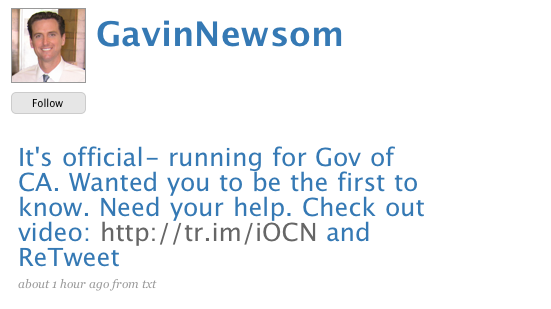 Crunch Network: CrunchBoard because it’s time for you to find a new Job2.0 |
| Verizon Opens Their Catalog To User Reviews, Probably A Bad Move Posted: 21 Apr 2009 10:08 AM PDT
This ought to be interesting. Apparently never having felt the wrath of a dissatisfied buyer with access to the internet, someone over at Verizon has just decided to enable users to leave public reviews on any phone in their catalog. Users can rate their handsets on a scale of 1-5 for ease of use, display, features, and battery life, then manually add their own pros, cons, and comments. Openness is good. Helping people make educated purchases is good. But this just seems like a bad move.
If I’ve learned anything from gallivanting around the internets in search of cell phone knowledge, it’s this: the majority of people taking the time to talk about their phones hate them. Now, that’s not saying that most people hate their phones - just those willing to take 20 minutes to throw down 300 words about a handset on a forum. It’s good ol’ Silent Majority/Loud Minority - though the vast majority of consumers can be neutral or positive on a product, a quick glance around the internet will make it seem like everyone despises it. This tends to be less of a problem on e-commerce resale sites, especially those which see lots of return buyers. Sites like Amazon have built entire communities out of the reviewing process, thus enticing folks to return and leave reviews for all products they buy - not just the ones they hate. People connect with the process and leave reviews both good and bad, and others seem to follow by example. With Verizon, it’s a whole different story. With 2-year contracts as a part of nearly every phone sale, the volume of return sales just isn’t that high. In 10 years, the average soccer mom might buy/trade up through 5-6 phones. That’s 5-6 opportunities to review, across a decade. Are they going to connect with the review process and tell of the good times they’ve had with the handset? Or will the only ones who bother be those looking to unleash their buyers remorse and all of their pent up frustration from spending hours dealing with customer service? Verizon has put up a safety buffer: they’re manually approving reviews, which may take up to 2 days. But what’s the criteria? Are they simply filtering out the messy, profane garbage, or will they nix reviews they feel are being too harsh? The masses (read: angry consumers on social sites) wouldn’t respond too kindly to the latter. What do you think - a good move toward openness, or a good way to doom handset sales? [via PhoneArena] Crunch Network: CrunchBoard because it’s time for you to find a new Job2.0 |
| Posted: 21 Apr 2009 09:35 AM PDT
Look closely at Time magazine’s online voting results so far for the Time 100 and you will see at the top someone called moot (aka 21-year-old Christopher Poole), the founder of 4chan, the notorious online bulletin board where hackers like to hang out. Not only did moot’s followers manage to get his name to the top of the Time 100 reader’s list, they also manipulated the next 20 spots. If you take the first letter of each name, it spells out the cryptic message, “Marblecake, also the game.” (See image below). It turns out the results were hacked with an auto-voting program spread on 4chan. (For details of the hack, read this post). What does it mean? Marblecake is a sophomoric sexual reference, which is in keeping with the spirit of 4chan, which also claims to be where Rickrolling and Lolcats got their start. As for the Time 100, the people have spoken. At least the people who hang out on 4chan.
Crunch Network: CrunchBoard because it’s time for you to find a new Job2.0 |
| New York Times Sees Intensifying Advertiser Pullback In First Quarter Posted: 21 Apr 2009 08:45 AM PDT
The advertising outlook for newspapers is going from awful to horrendous. The New York Times announced first quarter earnings today, revealing that total advertising revenues for its news media group (which includes the New York Times, the Boston Globe, and other regional newspapers) declined 28.4 percent, versus an 18.4 percent declinelast quarter. So the rate of decline for is intensifying Internet advertising revenues declined 6.1 percent to $67.6 million, compared to a 3.5 percent decline last quarter. The advertising situation at About.com is more “anemic” than at NYTimes.com, although cost-per-click rates at About.com seem to be holding up. Total advertising revenues were $335 million in the quarter and all revenues, including circulation, were $609 million. The company as a whole posted a net loss of $74.2 million. In other words, the New York Times lost more money across the board than it made from Internet advertising. The newspaper has been trimming staff, cutting costs, and selling assets to meet its financial obligations. CEO Janet Robinson expects advertising revenues to decline in the second quarter at a rate “similar to that of the first.” But from her talks with advertisers she gets the sense that they are “saving dollars in the first half” of the year to possible spend more in the second half, if they can. (In other words, they are holding back and taking a wait-and-see approach, which is smart in this economy). During the conference call, she also noted that the company is exploring new ways to generate online revenues beyond advertising, but cautioned that the new revenue models would have to be additive “without affecting the display advertising business.” She didn’t specify where those alternative revenues would come from, whether from some new micropayment scheme or somewhere else. Crunch Network: CrunchBase the free database of technology companies, people, and investors |
| Would You Like To Send Your Friends Some Ads? SocialTwist Sure Hopes So. Posted: 21 Apr 2009 08:20 AM PDT
Since then Sunnyvale, CA-based Pramati Technologies, the company behind SocialTwist, claims to have grown its customer list from 0 to 35,000+ advertisers from across the globe, including some heavyweights like P&G, Intel and Greenpeace. It’s been working to translate the service into a multitude of European languages and served up to half a billion word of mouth marketing and advertising widgets in the last 4 months alone. And now the company is introducing advertising widgets - dubbed TAF4 Ads - that come with the ability for visitors to share the ads with their friends by e-mailing them a template e-mail and link to a destination chosen by the advertiser. The widget makes a clickable Tell-a-Friend link appear at the top right of an ad unit, which pops up a box where surfers get to e-mail a template message along with the original ad and a link to the website where the ad originally appeared to their Gmail, Hotmail and Yahoo Mail contacts, or alternatively send it out to a specific e-mail address. To see it in action, go to this demo page and click the ‘Tell-a-Friend’ link in the top right ad unit. The rest is fairly straightforward. Maybe it’s just me, but I can’t for the life of me imagine this gaining a lot of traction among web users. How many times have you seriously enjoyed an online ad so much you were dying to e-mail the experience to all your friends and relatives? Call me old-fashioned, but I thought word-of-mouth revolved around recommending products and brands, not advertising units that promote them.
Crunch Network: CrunchGear drool over the sexiest new gadgets and hardware. |
| Advertising Everywhere: innerActive to Power ICQ’s Free Mobile Content Posted: 21 Apr 2009 07:38 AM PDT
Over the past year and a half, innerActive has been busy carving out a name for itself as a company aggressively pushing its monetization offering to mobile carriers and portals in Europe. The company’s core technology is the ability to dynamically inject advertising into mobile games, applications and video—content which has strong user engagement, but has yet to live up to its revenue generating potential (at least in the amounts players in the mobile industry hope for). The company has strategically chosen to stay clear of any attempt to monetize the mobile Web and focuses specifically on the monetization of content. innerActive describes its solution as an “Ad-funded AppStore,” a sort of agnostic platform for mobile operators that provides everything from the hosting and delivery of the content, to the campaign management and media planning, to the actual ad serving. The company also works directly with content publishers to create an ad-funded catalog. Co-CEO Offer Yehudai explained to me that it was this end-to-end solution that was key in having ICQ select its solution over alternatives. Under the terms of the deal, both innerActive and ICQ can sell ad space and there’s a flexible rev-share model to support such an arrangement.
The content requires a certain amount of prep work in order to be “innerActive ready”. An SDK is available to publishers, allowing them to tag areas inside their content for ad injection (view the video embedded below to see a typical end result—billboards in a game with real, clickable ads). The SDK supports all mobile OS’s and does not require any porting—”hundreds of handsets” are supported. Ads can be configured for click-to-WAP, calling, coupons, polling and the download of content ICQ will make all this free content available to its community from its mobile client, from a soon to be launched ‘ICQ Mobile Portal’, and through the desktop application. The latter will require the entering of a mobile number and then receiving a free SMS with a link to download the content. No client will be required to be installed on the handset. All-in-all this sounds like good news for ICQ’s users. The big question of course is whether offering ad-supported mobile content is a financially viable model. I guess we’ll find out soon enough because if innerActive can deliver CTR’s of up to 15% (as they claim), advertisers will be knocking on their door in droves and users will benefit from a growing selection of free content. Crunch Network: CrunchGear drool over the sexiest new gadgets and hardware. |
| Ages After Yahoo And Google, Microsoft Finally Enables Web-Based IM In Hotmail Posted: 21 Apr 2009 06:30 AM PDT
The new feature will be gradually rolled out, starting from today enabling subsets of users in Brazil, Canada, China, Germany, the Netherlands, Norway, and USA to send instant messages from the Windows Live Hotmail and People pages. The feature earlier rolled out to some users users in France, Italy, Japan, Mexico, Spain, and the UK. I’ve said this before: easily dismissed by geeks and savvy web users, Hotmail has a gigantic mainstream userbase who are not likely going to switch to an alternative webmail service en masse provided Microsoft keeps up with the times and lets Hotmail evolve the way its users are increasingly demanding it to. But make no mistake about it: Microsoft is ridicously late with adding this functionality to Hotmail. Your thoughts? Crunch Network: CrunchBase the free database of technology companies, people, and investors |
| Micro-Consolidation: PlaySpan Buys Spare Change Posted: 21 Apr 2009 05:45 AM PDT
The micro-industry forming around micro-transactions is now going through some micro-consolidation. PlaySpan, which is quickly racking up micro-payments across hundreds of video games and virtual worlds, is acquiring Spare Change Payments, a startup which focuses on micro-transactions for social networking apps. The value of the cash-and-stock deal was not disclosed. PlaySpan raised $16.8 million in a series B funding just last February from Easton Capital Group, Menlo Ventures, Novel TMT Ventures, and STIC. The startup was famously founded by a 12-year-old, Arjun Mehta, but it is really run by his father, CEO and co-founder Karl Mehta.
The company has processed more than $50 million worth of micro-transactions through its PayByCash and Ultimate Game Card products. While its focus so far has been games and virtual worlds, it recently began making its own forays into social networks with a deal to power some micropayments on hi5. But Spare Change already has more momentum on social networks. It powers micropayments across 700 social networking apps on Facebook, MySpace, and Bebo, and is on its way to processing $30 million worth of transactions this year. As the social networks and online games collide, and developers seek new ways to make money other than advertising, micropayments will continue to grow. Like any payments business, even micro-transactions are all about scale. The bigger PlaySpan can get before the giants finally wake up and enter the market seriously, the better chance it has to becoming the PayPal of micropayments. Of course, PayPal, Facebook and MySpace all have their own plans to become the PayPal of micropayments. And plenty of other startups, from Zuora to Zong, are vying for the title as well. Crunch Network: CrunchBoard because it’s time for you to find a new Job2.0 |
| Mobile Site Developer MoFuse Rolls Out Premium Service (Discount Code) Posted: 21 Apr 2009 05:44 AM PDT
MoFuse, a service that will take your website and instantly create a mobile version of it, is launching a premium version of its mobile website development service for the enterprise space. MoFuse’s existing platform, which spares websites the development costs of formatting the site by hand, creates customized iPhone versions of sites in addition to the standard versions for basic mobile browsers. MoFuse is offering TechCrunch readers 50% off any premium plan for Website owners who use the promotional code “TechCrunch” when signing up before May 1. MoFuse Premium for Business is a completely separate platform from the site’s original service, which will remain intact and will be known as MoFuse for Blogs. The premium service creates higher quality mobile sites for businesses with more features, including the ability to nest topics in the site with drag and drop technology, search functionality, Google Maps integration, color customization, a local weather app, and more. The pricing for the premium site development starts with the “Basic” plan, which is $39 per month with a 50,000 page view limit for one site; “Small Business,” which is $89 per month, creates 3 sites with a limit of 125,000 page views per site; and “Ultimate,” which is $199 per month, creates up to 10 sites with a limit of 1 million page views per site. Founded in 2007, MoFuse has become popular with publishers—the service has helped nearly 25,000 organizations create mobile websites. Several of our colleague publications in tech news use MoFuse for their mobile sites including GigaOm and ReadWriteWeb. In addition to converting a web site for mobile consumption, Mofuse also allows publishers to monetize their mobile websites via revenue shares with Google AdSense and AdMob. Jag.ag also provides a simple service to help less tech-savvy consumers create their own mobile presence in a few minutes but doesn’t offer some of the same premium features yet. Zinadoo and Wirenode also provide similar services. Crunch Network: CrunchGear drool over the sexiest new gadgets and hardware. |
| Lure In Users With Your Trackle Box Posted: 21 Apr 2009 03:54 AM PDT
Content on the web is constantly changing and while you can track changes in information manually, it’s often a time-consuming process to monitor the things you care about. Trackle, a personalized web and RSS feed tracker we wrote about earlier this year, is launching a “Trackle It” button that can be added to any site to help users track information instantly while surfing the web. Trackle.com’s free web service provides real-time personalized RSS feeds for data such as the latest crime in a user's neighborhood, fluctuating airline ticket prices, how much a user's house value is down this week, updated job listings, sports scores and more. Now with the introduction of the Trackle button, the tracking service wants to let sites provide instant tracking options directly to consumers and hopes to allow users to “Trackle” an item or feed from anywhere on the web. The button allows users to automatically sign up to receive notifications about personalized information, such as price drops, new content, messages about products, etc. via email or SMS directly from the site (instead of tracking the item from Trackle’s website, with the Trackle button, the consumer doesn’t have to be signed up to be a user on Trackle’s site). Trackle’s co-founder Pavan Nigam says that the Trackle button, which is sold to sites on a pay-per-action basis, can be incorporated into a site within an hour, using Trackle’s self serve API. He says that the button helps online marketers reach their audience with customized alerts that give users of a site a reason to return. The Trackle feature can be used to generate statistics about what’s most interesting to users. Currently, Trackle has several sites which are testing the beta version of this feature, including EveryTrail.com, Eurekaspot.com and KLDSoccer.com. Trackle is also offering sites the option of using a Trackle widget, instead of the integration of a Trackle button. The Trackle widget is similar to the button feature and allows users to track any updated information, changes or fluctuations of any item on a site in a widget form. Site owners can choose from over 100 of Trackle's tracking widgets, ranging from "Local Crime" and "Health" to “Weather.” For example, a ski-website might offer the "Trackle weather" widget to allow its readers to track local snow conditions. Widgets are continually updated and are ad-free. Trackle is also trying to integrate social media into its tracking service by launching a Trackle Facebook app. The app, which currently can only track sports scores and events, allows you to create a “tracklet” for a team or type of event to be tracked, and then sends you feeds alerts to you within the application. The alerts also go into your News Feed and your friends can see and comment on your Trackle updates. Trackle says it also plans to develop a MySpace app. As we noted in our original review of Trackle, the breadth and specificity of Trackle's information is what differentiates the site from other RSS and product tracking applications like Google Alerts, Yotify and Notify.me (which also allows sites to embed a “notify” widget to track items). The introduction of the “Trackle” button is a useful idea, but in order for it to be widely adopted by a variety of users, it needs to be more viral. The “Trackle” button needs to be an option on eBay, or Kayak or Craigslist for it to become truly useful, which is an ambitious task. The integration with Facebook is definitely key and Trackle says that the site will also integrate with Twitter and other social media sites in the future. 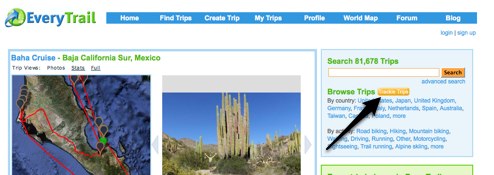  Crunch Network: CrunchGear drool over the sexiest new gadgets and hardware. |
| IRLConnect puts Twitter and Facebook on a map with live video Posted: 21 Apr 2009 02:14 AM PDT
The site is bringing together mobile devices and multiple social networks, including Twitter and Facebook, into a very visual platform. As well as integrating YouTube video onto their Google map, they’re pulling in partners including pictures from Mobypicture and live video from Bambuser. It will also pull in geotagged content from YouTube and news alerts from media such as CNN and Reuters. Crunch Network: MobileCrunch Mobile Gadgets and Applications, Delivered Daily. |
| Amazon Wants To Bully Amazee Into Changing Its Name Posted: 21 Apr 2009 01:43 AM PDT
Amazon claims consumers could be confused by the similarity of the two names and wrongfully assume there’s some sort of affiliation. Amazee, on the other hand, claims the name is derived from the word ‘amazing’ (sounds plausible) and alleges that there’s no chance for confusion. The startup launched a new project on its own service, and this is an excerpt of the description:
At this point, it looks like Amazon attorneys representing their Luxembourg subsidiary are demanding the deletion of Amazee in the Swiss trademark register (after waiting for the opposition period to expire) while their US attorneys have filed an appeal against the registration of Amazee in the US. Amazee, which we likened to a ‘Facebook meets Basecamp for activists’ when it launched, is now calling its users and fans to speak up in favor of the service on the project, and they’re trying to get some publicity out of it in a humorous way: if you join to support the submitted project, you have a shot at winning a 100$ Amazon gift certificate. Personally, I’m pleased to see the young company takes a stance against Amazon, even if they’re clearly now trying to turn the situation into a promotional vehicle. Having taken a good look at Amazee’s size and scope, its logo, the believable explanation of how they came up with the name and particularly its current activities and future plans, I think Amazon is looking ridiculous going after them. (Via BloggingTom - in German) Crunch Network: CrunchBase the free database of technology companies, people, and investors |
| Live Video From London - TechCrunch Geek’n Rolla Posted: 20 Apr 2009 11:30 PM PDT
Geek'n Rolla is sponsored by Viadeo one of the largest professional social networks in the world, and supported by UK Trade and Investment, as well as NESTA, the National Endowment for Science, Technology & the Arts. Not only will we be having a great day of content for startups, we are planning the mother of all evening networking parties at one of London’s premier venues, Cafe de Paris, kindly sponsored by Winston & Strawn’s Bootlaw. Doug Richard’s School for Startups is our Strategic Event Partner. Speaker gifts and competition prizes are donated by Park Lane Champagne. Crunch Network: MobileCrunch Mobile Gadgets and Applications, Delivered Daily. |
| Interview With Digg’s Kevin Rose: The State of The Union Posted: 20 Apr 2009 10:19 PM PDT Last week I sat down with Digg founder Kevin Rose to get the Digg “State of the Union.” The company, now more than four years old, has continued to grow incredibly since launching in late 2004 and regularly innovates with new products. They are rumored to be approaching profitability after making headcount cuts earlier this year. But much of the hype around Digg is now in the past. From 2006 onwards there were regular rumors of Digg being acquired. So many, in fact, that we called on CEO Jay Adelson to “Just sell Digg already” in late 2007. And Jay certainly tried to. They were very (so very) close to closing a deal with Google in mid 2008, but the deal fell apart at the 11th hour. Digg was quite literally left standing at the altar. And we believe that the company made the decision at that point to stop looking for buyers and to focus quietly on the core business for a long while. They raised more money late last year. I talk to Kevin about the history of Digg for about half of the 30 minute interview. There’s a lot of good content about the early attempts to buy Digg, since it’s far enough in the past that he feels comfortable talking about it. But the forward looking stuff is easily the most interesting. I asked Kevin if he felt that any of the numerous competitors (AOL Propeller, Yahoo Buzz, Mixx, Reddit, Hacker News) were a true threat to Digg. He shook his head no before I even finished the question (skip to the 29 minute mark), and said something surprising: “I just feel that we’re heading in a different direction than them.” When pressed for more details, he says that they’re launching a product to address the real-time threat that Twitter, Facebook and others are focused on, and that the new Digg search was the first hint of what they’re thinking of. More details soon, I’m sure. The full transcript is below: Michael Arrington: I’m here with Kevin Rose, the founder of Digg, Kevin Rose. Kevin Rose: Hey. Arrington: Thanks for inviting me to your office. Rose: Yeah, thanks for coming out to the office. Arrington: Yeah. I wanted to get a sort of state of the union of Digg, because the company has been around now for… Rose: Four plus years. Arrington: Four plus years, November 2004. So, obviously it’s grown a lot, changed a lot, and it’s clear that there’s a big focus on new products and some things that you’re doing. Rose: Excellent. Arrington: I want to talk about the last couple of years, what happened to the company, the good and the bad. Rose: Sure. Arrington: And how it’s affected your thoughts on product and things like that. Rose: Sure. Arrington: So, could we take a step back and I think the history of Digg is well known. You launched in November 2004, it’s a way for people to add bookmarks that they found interesting, other people Digg those bookmarks, then the best stuff goes to the top. Rose: Right. Arrington: That’s well known. When did the idea explode and you realized definitely it’s taken hold, it’s gone viral and the people love this? Network effect kicked in, middle of ‘05? Rose: Yeah, middle of ‘05. Arrington: That’s when you launched Digg 2? Rose: Yeah, Digg two was kind of the catalyst, I think, for a lot of that stuff. Arrington: Yeah. Rose: I think that Digg one was just my own design and it was still a very, kind of crappy digging process. We weren’t using AJAX yet for the digging. So, you would actually Digg a story, it would take you to another page that said, “Thanks for your Digg.” And then you would have to go back to the last page you were at. So, AJAX wasn’t big back then. I remember when we were calling it “Asynchronous JavaScript” and everyone was like… When the word AJAX came out, we were all like, “Oh, that’s different.” And then all of the sudden, everyone was using that to speed things up and to make things easier. So, we launched that, the new design, the new big yellow buttons, kind of bring the voting aspect to the site front and center. Arrington: And that was when, June ‘05? Or was it earlier? Rose: Something like that. Right, that was just before Jay came on, because Jay joined the team a month or two after launching 2.0. Arrington: Yeah. Rose: Because I was showing… Jason Calacanis was interested in buying Digg, even at 1.0, and that’s when… Arrington: Did he make an offer, or he was sort of floating around a million dollars? Rose: Yeah, he made an email offer. There were never any lawyers involved or anything like that. Arrington: On behalf of AOL, right? Rose: No, no this is… Arrington: Oh, he hadn’t sold to AOL yet. Rose: Right, so he’s working with Cuban and Weblogs.com. Arrington: Weblogs.com. Rose: And we met for sushi in Los Angeles, and he really liked the concept. I showed him version two before we launched and he took a look at the new designs and was like, “Done.” And then a day later, I got an email from him stating that he like to fold it into the mix of sites that he was already working on and thought it was really cool. Arrington: And was it the price that was the problem, or just him? Rose: No, I like Jason. I think it was that the terms were really funky. He’s a smart, shrewd businessman. He was like, “Here’s a kid that doesn’t know anything” - at that time I’d never dealt with the VC community, with investors of any shape or form. He basically threw out some pretty aggressive terms. I was kind of blown away. I was like, “Wow, I could actually make a million dollars here,” on something that I’d spent four months building. Arrington: Yeah. Rose: Shared that stuff with Jay, at the time, who was just kind of an advisor. And he looked at it and said, “These are crap terms, don’t do it. If this is something you’re really serious about, let’s turn it into a real business.” There already was a business, I’d created a corporation for Digg before we launched. But, it was one of those $250 kits that you go and do online. Arrington: Yeah. Rose: But, yeah. Version two was only really starting to take off. Arrington: But, you didn’t actually raise any capital until… in October of ‘05, right? Or, at least that’s when it was announced? Rose: Well, I was basically funding the entire project out of my own bank account. I had run out of cash. We needed some more servers, and by more I mean like, server number three or something like that. I was really in a sad state of affairs as far as my savings, so it was only a few thousand dollars and I was out of money. And at that point in time, I talked to a friend of mine, Chris, who started a company called TextAmerica. You probably don’t remember them, but they were a really big photo… You could take a photo with your cell phone, email it, and then post it online kind of a photo blog type service. He threw in $50K, so he was our first Angel. And then, as that was happening, they gave us a little bit of breathing room, at least another month of breathing room to where we could actually sit down with some real Angels. We were in the process of moving back up to the Bay area. And that’s when we sat down with the Angels and VC’s at the same time, to try and figure out who we wanted to work with. Arrington: And you worked with a bunch of them, Greylock, Amidiar, Mark Hendry, Smith-Hoffman, Ron Conway - Mike Maples somehow squeezed in there. He just started a new business, right? Rose: Mike Maples is awesome. Well, he was actually introduced to us by… He was working with Conway at the time. Arrington: OK. Rose: Kind of vetting deals. Conway is, of course, amazing, and Maples has turned out to be just an awesome… You know Maples, he’s just an awesome guy. I’d be honored to have him involved in anything I ever do in the future. Arrington: So, what was the valuation that round? Rose: That round? Arrington: Yeah, $2.8 million you raised. Rose: Did I raise $2.8? I don’t know. I think we had a post of like, maybe $8? Arrington: OK. Rose: Something like that. Arrington: Yeah, and that was in ‘05, so it was before things started exploding. Rose: Right. Arrington: So, Delicious hadn’t been bought yet… Rose: We had good grab, everyone was looking at Alexa at that time, right? And then, the grass grew up and to the right; that was something that VC’s were very into. I think one of the problems, though, I wouldn’t have gone and shopped as many venture capital’s as we did. We went all up and down Sand Hill Road and we had term sheets from just a whole slew of different companies. Took up a lot of time. This is time when servers were falling over, things were crashing. We should have just met with two or three and just gone from there. Arrington: And Jay was on board at that point, a CEO? Rose: Right, so the second I actually needed some real cash, I had no idea what I was doing. Jay had done it before. I said, “Jay, you come on, run the business side of the house, and I’m fine with giving you the CEO role,” because at the time, that’s what I was doing, as long as I have final say on whatever product we decide to… Arrington: Has that caused any stress in the relationship? With you having final say on the product? Rose: No, not really. We battle, we have healthy battles back and forth about certain things, but at the end of the day, it all works out. Arrington: So, ‘06, we’re only up to ‘06 now, but I think we’ll go a little faster, ‘06 was when all the acquisition rumors started. I remember, I forgot which blog, a small blog said, “It’s guaranteed, I know that Yahoo bought Digg.” Was it $20 million is what the rumor was? Rose: Twenty, twenty five, something like that, yeah. Arrington: Was there any truth to that? Were there discussions going on or was that just completely fabricated? Already you were getting interested… Rose: We were talking to… That was at the point where all of the sudden, Digg had enough media attention to where a lot of companies started knocking on the door. And a lot of the times it was, “We don’t understand who you are or what you do, but we hear that you’re the future of news, we want to talk to you.” Arrington: Yeah. Rose: Especially the second one rumor appears, then you get calls from five other companies saying, “Is this true? Is this true? If so, let’s talk, let’s talk.” Arrington: Yeah. Rose: So, Yahoo had purchased Delicious, and I’m friends with Joshua Shackner and he called me up and said “are you talking to here at Yahoo? If not you should be.” Like he had been talking to some folks there, made some introductions, and there were some conversation going back and forth but it never got really crazy serious. We never got to a term sheet or anything like that. But, those were the days of “you were a distraction” it was a major distraction for us, and looking back on things I probably would have just pushed that all aside and stayed focused on the product. Because I’m getting phone calls from Rupert Murdoch, I fly down to L.A., sit down, have lunch with him, he invites us out for drinks. He wants to know how this might work out. Fly out and be with Barry Diller. I mean this is an honor and a crazy exciting time. I’m sitting here thinking “Wow, I could never, ever hope to have an audience with these guys and now I’m sitting here hanging out with them.” It was nuts. Arrington: So, that was a three year period through ‘08 where… I mean barley a month would go by without a huge rumor that you guys were getting bought. Rose: Right. Arrington: And you look at massive growth, lots of attention, everything was going great. Although you had some side projects which you still do. But, obviously very focused on Digg, and it’s well documented that offers were made and two parties never really came together. You raised another round of funding in the middle of that, at the end of ‘06, another eight a half million. Is that right? Something like that? Rose: That sounds about right. Arrington: That’s all water under the bridge at that point. Last year, it seems like things sort of peaked. Early in the year it seemed like there was interest from Microsoft, or Google, maybe some others. Google seemed to be pretty interested, at least from my sources and they came pretty close to buying you guys. I suspect that you’re not going to talk too much about this since it is recent history, still. But, there seemed to be an almost acquisition in the middle of the year, didn’t have, and you guys made, it seems to me, a conscious decision to regroup and really focus on the core business and the long haul. Is that correct, or…? Rose: I think that there were some pretty intense conversations with a couple parties; and at the end of the day, I don’t think we’ve achieved our grand vision of having… I always talked to the staff about a world where Digg will have a 20, 30, 50 thousand votes on stories and articles, and really democratizing media. I just feel as though we have a long way to go. The question is… often times when these deals come to the table is it going to be a situation where… Arrington: Of course you… Rose: Two plus two equals ten, well not necessarily. Arrington: Oh, no, I’m sorry. I thought you were going to it’s a situation where they buy us and then we go into deep freeze, which is what happens to most acquisitions. Rose: Right, right, yeah, exactly. Which really bothers me because you see this happen time and time again, you see these little great ideas, start ups, and all of a sudden it turns into more process and overhead and it’s not a win. It’s really kind of “Oh, well that was fun” and then it just goes to fizzle out, and that’s the end of your baby. Arrington: Normally, I’d call bullshit on that. I’d just say “Yeah, that’s great but $100 million in your pocket might get you over your concerns for your baby.” The one thing I heard is that in the last round, so you did another round late last year, it was a bigger round. You raised $29 million, $28.7 million, something like that. You and Jay maybe some others took a little bit of money off the table. What I heard is that you actually could have taken a lot of money off the table, and you elected to take very, very little. There was more money that wanted to come in than you guys took. What was the thinking behind that? You could have taken $10 million of the table at the point if you really wanted to, right? Rose: I think that it’s a pretty common thing in the valley with all founders of companies that get to a certain size to have in later rounds venture capitalists approach you and say “we understand you can sell, we know that you could take this offer at $20 million, or $50 million, or whatever it maybe. But, we believe five years from now, you’re a $5 billion company and we’d like to see that upside. So, as part of this next round we will buy some of your stock.” Arrington: Yeah, but you’d want to sell that much, is that right? Rose: Well I’d want to talk about what I have or have not sold. Arrington: All your investors are willing to talk about it. The rumor I’ve heard is you took a million dollars off the table. I don’t want to get into your personal finances, but it seems to me that it’s pretty clear you could’ve taken a lot more than you did, whatever that number is. Is that because… is there some reason because you really want to see this through, and you really think this is a billion dollar business someday? Rose: I’m just speaking in general terms here, but in speaking with a lot of my friends that are in similar situations and are founders of other companies. Arrington: Like who? Rose: I don’t want to… I’m not going to name names. You’re very good at this. But, one of the things that- Arrington: Yeah, we’ll turn the camera off for a second. Rose: Yeah, right. I’ve seen you do that before and the camera’s still rolling. One of the things that is pretty common is… one of the things that you want to weigh when you’re trying to figure this out is “OK, if this were to blow up tomorrow I don’t want to make sure that this is a waste of my time.” At the same time, you want to have enough equity still left in the company that you could see that upside down the road. So, I think that if you believe in your company, you’re not going to sell all your shares, you’re going to want to hold onto that and continue to charge ahead. So, I am still that single largest shareholder at Digg, and I believe in what we’re trying to build and I know our product road map is as solid as it’s ever been, and I’m excited to keep plugging along. Arrington: So, let’s shift topics a little bit and talk about plugging along. You guys have always been pretty innovative on the product side, while keeping the core idea. Obviously, you’re not going to mess with that where people vote for stories, and then people see the stories. You’ve done a lot of things over the years to combat - not spam, but sort of fake voting - there’s so much traffic at stake, and creating algorithms to try to figure that out, and group people together who are voting as blocks. Rose: You’re just making some of this shit up now. Arrington: No, I mean you talked about how that’s an ongoing battle, right? Rose: Right, yeah, yeah. Arrington: What I want to understand, I don’t think that’s actually that interesting. I agree it’s probably an ongoing battle which you’ll either win or lose. But, what’s more interesting to me are some of the things you’ve done more recently. I’d like to understand what you’re plans are for the future broadly - around the Digg Bar, which you’ve just recently launched, and around the new search, which really seems to be two years too late. But, you’ve finally got around to fixing search, and it’s excellent. So, you’re starting to do some really interesting things with parts of the project. So could you talk a little bit about search, and Digg Bar, and what you think is going to happen in the future. Rose: Sure, which one do you want to cover first? Digg Bar? Arrington: Let’s go backwards, so let’s talk about Digg Bar first. Rose: So, the idea behind Digg bar, we have these things internally called Digg ideas meetings where any employee can come and pitch an idea to the company and they’ll be often times prototypes of different ideas using our staging servers so that we can play around with real data and see what stuff’s inside before we actually push them on it. The Digg Bar came up actually a few years ago. It was something that we had about two-and-a-half years ago. We had an actual mockup of it. We didn’t actually have it working until one of the employees picked up where someone had left off. But, the idea is that we’ve known for a long time that it’s a really clunky process for someone to go click out, read an article, come back, Digg, and with our amateur things that we use to track behavior on the site. It’s oftentimes the click out really enjoys something clicked on, forget to click the story or click out, have to come back and then it’s just back and forth. So, the idea was can we create a tool that adds value to the user when they go and visit this third party site. Will they find value and be able to Digg the story directly on the site if there’s now a Digg button in there? Will they find value in looking at related stories and more stories from that source? Is there value in showing the number of times the page had been viewed, not just the Diggs but the overall global use? Also, you want to make it so that it would be easy for you to be able to share that person’s, that publisher’s story into other social graphs. So one click out to Facebook, one click out to Twitter, all integrated into a single bar that also happens to do short URLs at the same time. Arrington: Which is great for Twitter and yeah… Rose: Right, which is great for Twitter. So, it’s like it was this big, massive collection of a bunch of different ideas all coming together and it was something I’m really excited about because I think from a registered user’s perspective, the data is clear. Our Diggs - 43 percent of Diggs now occur on the Digg Bar itself, and it’s huge. That’s huge for us. People are clicking on… Arrington: Which really means people really do want to check out the story before they hit that Digg button. Rose: Right. Absolutely. Arrington: Before they either dug it really without reading it, just based on the title of the summary, or they clicked out and then came back. Rose: Right. Arrington: Yeah. So, you’re probably seeing… Rose: Well, we’re seeing Diggs up as well. So, what once was click out, I read it, oh, I’m moved on to something else; it’s click out, I read, oh, I really enjoyed it and I Digg it, which is great for helping surface other stories to the front page. It’s also great having users interact and view other similar stories or more from that source to drive people deeper within that one site. But, we figured let’s go out of the gate and turn it on for everyone and see if there’s a value across the board and see if the non-users think that the features such as views of related stories, related by source and comments like top most controversial and recent are enough where they would look at that and say, “OK, I’m not a Digger. I don’t have an account. I can’t participate and click Digg. But, these other value adds are something I enjoy.” That feedback from the anonymous crowd was mixed, even in some of the registered users as well. The vocal registered users, I should say, can oftentimes swing one way versus when you take a look at the whole entire picture and how many people are actually digging in the five million users that we have register an account on Digg. Arrington: You have five million registered users on Digg? Rose: About 4.8 million or something like that, 4.9 million or something like that. I don’t know exactly. Arrington: But like 35 million uniques, right? Rose: Right, 35 million unique among them. So, long story short, we sat back and just collected the data. We were taking a look at what people are doing with the bar. Were they closing it out? Were they closing and not blocking it, and we looked at all the different segments. So, someone that comes in from the search engine, that’s called a search and wander. When they click out, what do they do with the bar versus someone that comes in from the Digg home page and clicks out that’s not registered versus someone that has a registered, and kind of looked at the data and then also took in the feedback from the SEO community, talking about how if a search engine comes in and has a anonymous user effectively and they try and crawl on these short URLs, Digg short URLs, I’ll post it on another site, will that impact their Google Juice? So, there was a bunch of different cards on the table and it was kind of one of those things where we said, “OK. We’re not going to need your reaction here in day two and it’d be like, hey, there were a bit of changes.” So, we sat back, collected a week plus worth of data, including a ton of our survey feedback forms that we had right into the bar which people would click at into the survey on what they thought of the bar. At the end of the day, it just made sense to simplify things and keep it a registered only user experience. So essentially, if anyone - search engine, user, a non-user of Digg, receives one of these short Digg URLs through Twitter or wherever else in the universe and they click on it and they’re not logged in, it’s just going to do a straight out, 301 redirect to the destination site. Arrington: Yeah. So, you announced a couple of days ago those changes. What about just the effect of the Digg Bar there? Are you seeing a huge increase in the Digg visitors from people using it on Twitter? Rose: Yeah. Arrington: Yeah. I mean, like how many? Rose: I mean, not huge, but it’s… I’d have to get you numbers from our staff. Arrington: Regarding the material, a 10 percent to 20 percent increase? Rose: Do you know what the numbers are? I don’t either. It’s not a 20 percent increase in uniques. I’m thinking it’s around the five percent to 10 percent range, or somewhere around there. But, that’s… Arrington: Which is great. Rose: Which is great because it’s allowing us to bring in more users to put on our stories that could just be on the site. Arrington: What about search and let’s start to think - like you said a few minutes ago that your grand vision is you’d have stories with up to 50,000 Diggs on it. Now, what’s some of the bigger stories out of 5000 Diggs like? Rose: In any given week, there’s a story from like 13,000. So, our big stories are the 13,000 to 15,000 Diggs. If it’s insane, like a president gets elected, mostly we’re talking like the 20,000 to 30,000 world. Arrington: Let me ask you where all the top stories are in the tens of thousands of Diggs. How do you get there? How do you bridge from here to there and how long is that road? Rose: That road is a lot shorter than you would think. Arrington: OK. Rose: I mean, I’m not going to go into details but… Arrington: Sure. Rose: Product details, but I will say we’ve been talking about - I think that we kind of just could give a really good overview of the four years and leading up into this point, and I think that there was only one time in Digg’s history where really… Well, two times, I think, that we really kind of did more than just add-ons. Like, Digg has always been launched - we’d launch the site and then adding feature, feature, feature revision and feature revision, right? The big kind of product changes for us were 2.0, which went from a nasty, ugly design with no AJAX and still more interactive experience, expanding it to all categories, so getting out just the tech. What we’re working on now is what I would consider to be the biggest overhaul to how everything works behind the scenes, and that’s no joke. Like we… Arrington: Are we talking rewrite tech stuff? Rose: Completely new directions for us that you will look at and I guarantee you would be like that’s a ballsy move. Like it’s really, we’re evolving and we’ve got some really exciting things that we believe are going to take us to that turn. Arrington: Is that this year? Rose: I mean, I’m not going to give out hard dates, but it’s some time in the next six months. Arrington: What might that look like? Like, what are we talking about? Rose: Well, we’re talking about a revamp of the site. Arrington: Like a logo change? Rose: Yeah, a logo change is going to get us there. We’re talking about some lens flares on the logo… Arrington: Well, what are you going to do so that somebody’s going to, like, “Hey, here’s the stories.” And they’re saying, “Digg it!” I mean that’s kind of it. Right? It’s like a one trick pony with bells and whistles attached. I mean, I agree that most of your changes are bells and whistles. So, what is it that you’re going to do that doest kill your core idea that’s a whole new thing? Rose: I can’t go into that stuff right now. Arrington: Can we see a screen-shot? Rose: Sure. Arrington: Do you need to raise any more money this year? Rose: No. We’ve put a lot of time and effort in focusing on revenue in the last six months. As we should. We essentially have started to build out our ad sales team. We’ve got another year and a half with Microsoft. And our ad sales team now is starting to focus on more custom integrations with bigger ad campaigns. So, it’s exciting. Arrington: Does Microsoft… How much revenue is Microsoft? It’s like 100 million over the three years of the contract. Something like that? Rose: We don’t disclose that stuff. Arrington: I’m pretty sure that one night you told me that. We were having beers. I’m pretty sure you said 100 million dollars. Rose: Really? Arrington: It’s a three year deal, it’s up next year. And now you’re going, “Direct sales is the future.” But the new product stuff isn’t around revenue. Right? Rose: No, it is. There’s a piece of that as well. Absolutely. There’s a big component around revenue, which is nice because for the first time… I feel as though it’s always kind of been this awkward built-on to Digg. It’s always like, “Oh, we have these plans. Oh, we can do a custom thing with Digg dialog.” Or something like that, right? Arrington: Oh it’s the new ad product that we talked about. Remember? You told me this last year. Well, you never told me this, but I was thinking about it last year, which is - You have ads that basically people vote on. And the better the ad, the cheaper it is, and the higher it gets ranked. Rose: Is an ad product really going to get us to the world of 30 to 50 thousand Diggs? No. Arrington: No, but I love that product. I do like that product idea. You know what I’m saying, right? Rose: I know what you’re saying. Arrington: This is where it’s writing the story, and people vote on it based on it based on how good the ad is. I think there’s something there. I don’t know quite what it is, but the idea is like, the higher it is, and maybe even the cheaper it is, the more people vote on it. And that really encourages really good ads. Whatever those ads are. I think that’s interesting, so… Rose: You always wonder why… You asked me one time why… What was that question with the off-handed comment that you made about, “What is your staff working on?” Because we had so many developers. Arrington: You had 70 engineers, or 50 engineers out of 70 employees at one point. Right? Rose: I don’t think it’s 50 engineers. It’s probably about 40 or so. Arrington: Yeah and it’s Digg, what do you need? Like one guy? And then, you know, some office guys to keep the surplus revenue up. Rose: How many office guys do you have? Arrington: Oh, we have like one tech guy. Rose: How many servers? Arrington: Three, I think. Rose: Well, that’s the problem. Not to say your site is not huge, because I know you do a good job with the cash. I mean, I think you work with Chris, right? Arrington: Yeah. Media Temple does all of our hosting. Rose: Yeah, Chris is amazing. Arrington: He’s absolutely amazing. Rose: He can tweak anything to run off, like, a couple of servers. Arrington: Yeah, but what the hell did you need with 50 engineers when… Rose: Hundreds and hundreds of servers my friend. And new projects are in the staging environments. Just, it requires… Arrington: It wasn’t my argument that you guys weren’t stupid, it wasn’t that they were doing nothing. It was that you were working on some big things. Rose: Big new things are coming. Arrington: But then you laid them off. Right? Rose: No, absolutely not. We still have a team of 40 or so engineers. Arrington: OK. Total employees? 50? Rose: 72 or 70. Arrington: Oh I thought it was 70 before the layoffs. Woman: We still hire. Arrington: OK. Well again, I don’t want you to talk about… And you’re not going to talk about the new product. And actually I didn’t even know… Rose: I will say this. I don’t want to get into specific details about the product, but I believe that it’s time for Digg to get a little bit more real-time in nature. And we need to be a living and breathing site. And you know, that’s an exciting direction for us. I think that’s part of the reason why we rolled out a pretty awesome search. It was kind of us experimenting with some of that. Arrington: OK, well that’s a teaser. That’s great. One thing that concerns me is that massive more participation on the site probably means… Which is a good thing but it probably means, on the downside, more trolling. Any community, the bigger it gets… And Digg long ago hit that point where you get a lot of negativity from users. And you guys have done as well as anyone in fighting that and keeping the community as positive as possible and as interesting as possible. But, how do you fight that in the future? If you get orders of magnitude bigger, what do you do? Rose: Well, I think that it’s clear that you can’t throw 35 million people in the same sandbox and expect them to always get along. There’s no doubt about that. It has to do with fostering positive communication among friends and peers, and then also the way that you slice the data. And giving people a place to hang out and call home that might not necessarily be just the Digg front page. Arrington: Just a couple more questions if I can. Rose: Sure. Arrington: So you guys have had, obviously, a lot of competitors over time. You had Reddit, which eventually Conde Nast bought. It’s now part of Wired I guess. Mixx is out there. There’s Hacker News, which is a great site run by Paul Graham. You’ve seen that I’m sure, right? It’s sort of a Digg site just for tech news. Rose: Yeah. Arrington: There’s Netscape which became Propeller, which really seems to be on its last legs. I think TechCrunch is actually quite a bit bigger than Propeller, and obviously we’re a blog Rose: You can remember now. Arrington: No, I don’t see that happening. I mean it’s very small. Oh and there’s also Yahoo! Buzz. So, I mean Yahoo!… Big guys, Yahoo! And AOL gun for you. And then there’s the small sites. I think Mixx in particular considers itself to be a competitor. Do those guys really have a chance to… Do you feel like you’re so big now that… Rose: [Shakes his head no]. I don’t feel that we’re so big now, I just feel that we’re heading in a different direction than them. Arrington: Well, see that gets back to the… You’ve got to remember the golden goose, or what’s that saying? Like you have this thing that kind of works. Woman: The golden egg. Arrington: Yeah, the golden egg. Woman: The golden goose that won’t lay the gold egg. Arrington: Maybe we could edit that to make it sound a little more intelligent but… [laughter] Arrington: Then you have the golden egg or the goose, and you can’t screw that up. Right? So how do you… I guess what I need is more details on what you’re… You know, the new real-time stuff. Rose: Yeah. Well, I’m happy to, when the time comes where I can sit down with you and… I don’t think you do embargos anymore so I don’t know if that’s going to happen. Are you still on that train or not? Arrington: I do embargos with PR groups that I respect and that have not screwed up in the past. And your communications people are pretty nice. Your New Years resolutions include, you wanted to go on a date with Jennifer Aniston. And I assume that you were at least partially serious. Is that… Rose: Partially serious? Arrington: Well, I don’t know if it was completely a joke or if you really meant it. I mean, do you have a plan for that? Has it happened? Rose: I was more joking than anything else. But, then again, if she wants to go on a date… Arrington: Does she have a publicist or an agent that reached out to you? I mean it seems like… Rose: She didn’t said anything about this. Woman: Look at all surfers that won’t Twitter. Rose: Oh yeah that’s right, she hates people that Twitter so I’m kind of out. Arrington: She has strong feelings about Twitter? Rose: She broke up with John Mayer because he was tweeting too much. Arrington: Oh. I’ve got to read more blogs about celebrity stuff. Woman: That’s not going to work out for Kevin. Rose: Yeah, it’s game over. Arrington: OK. Well, thanks very much for your time. I really look forward to the new stuff, and good luck with it all. Rose: Thanks. Crunch Network: MobileCrunch Mobile Gadgets and Applications, Delivered Daily. |
| MySpace Finally Opens The Door To Application Notifications Posted: 20 Apr 2009 09:40 PM PDT Tonight MySpace is preparing to launch a new addition to its application platform that allows developers to distribute notifications from their apps to their users. It may not sound particularly exciting at first, but the feature is one that developers have been clamoring for, as the notifications are essential to drive asyncronous applications (like a long-term chess games), and can be used to keep users engaged with a variety of other apps. The program is only in Beta for now (developers can only send notifications to other developers or themselves) with plans to release it more widely in the near future. Given how basic the feature is, it’s surprising that we haven’t seen it sooner. So what took so long? MySpace says that it’s doing its best to prevent abuse from spammy applications - a problem that Facebook suffered from for a few months when it first got started (it has since employed a variety of measures to curb spam, but it isn’t perfect). Notices will be shown in their own channel on MySpace, similar to the way invites are in the site’s message center, so even if some spam does get through it shouldn’t be too annoying. For more details, check out the MySpace blog post here. Crunch Network: CrunchBase the free database of technology companies, people, and investors |
| Katalyst Media Taking Punk’d Live With Ustream Posted: 20 Apr 2009 08:43 PM PDT
Katalyst is teaming up with Ustream, the online streaming video service, to bring “Punk'd-style experiences” to the platform. It would seem to have all the makings of a new web hit: People getting tricked and embarrassed on video, the whole thing happening live, interactivity and, perhaps most importantly to get it off the ground, star power. As we saw this past week with Kutcher’s race to a million Twitter followers, the guy knows how to leverage himself on the web. Of course, content is still king. Kutcher and partner Jason Goldberg’s web cartoon show Blah Girls, hasn’t exactly exploded onto the scene after being unveiled at last year’s TC50. Traffic to the Blah Girl’s site does seem to be increasing nicely now, but it was in a rut for a while — and pales in comparison to say, the amount of pageviews Kutcher’s Twitter profile did just last week. And to be fair, Blah Girls is syndicated a bunch of different places, so website traffic doesn’t mean all that much for the show. But Ustream knows a bit about huge viral shows itself. It hosts the Shiba Inu Puppy Cam, which is literally just a live stream of a puffy puppies sitting there being cute. That video has attracted some 10 million viewers, according to Ustream. And Ustream also did some major streaming during President Obama’s inauguration in January. On top of their web partnership, the two sides plan to bring their videos to the iPhone in May, with a new live streaming aggregator app, taking all of these Punk’d-style live videos mobile. As I said, it sounds like a winning combo, but I would caution Kutcher and company of one thing: There is still backlash on the web. If you overexpose yourself too much, users can get turned off, just as viewers do in Hollywood. Stay focused on what works, but don’t try to do too much. And please follow up on your promise to punk Ted Turner. Crunch Network: CrunchBoard because it’s time for you to find a new Job2.0 |
| Skout Fully Embraces Location-Based Dating With Homepage Relaunch Posted: 20 Apr 2009 08:29 PM PDT Earlier this year Skout shifted gears, shedding its role as a traditional location-based social network in the same vein as Brightkite to become a network exclusively focused on location-based dating. It’s now primarily centered around its iPhone application, which launched in January and was one of the iPhone’s first dating apps. But until now its web presence has failed to properly reflect its shift to dating, presenting users with a clunky social network that the Skout team didn’t pay much attention to. Today, Skout is looking to fix that with a revamped and simplified homepage that makes flirting its top priority. The site now primarily revolves around a location-based feed, which anyone in your region can post status updates and photos to. There’s also a ‘hotlist’, which allows users to ‘follow’ the actions of the users they find interesting (the site has swapped its Facebook-like friending system to a Twitteresque following model, so you can follow people you don’t know). The site now also more prominently features a chat area, and allows you to ‘wink’ at people. And that’s about it. The simplicity makes the site easy to navigate, but I can’t help but feel that Skout might have become a little too basic - there just doesn’t seem to be a whole lot going on. That may not prove to be too much of a problem though, as the site is really only meant to serve as an extension to the iPhone app. The company is reporting around 2000-3000 new users sign up per day, with 15,000 unique logins on a daily basis.
I’ve previously expressed my reservations about Skout - namely, I question if there’s really room for yet another dating site (I suspect some of the more established players will release location-based apps of their own). But it’s also doing some smart things, like bringing a new product called Skout OUT to bars and clubs, which users can interact with on digital screens (the company currently has some major deals in the works on this front). And it’s also beginning to white label its network, allowing sites to offer their own branded dating apps that are pre-populated with Skout users. Crunch Network: CrunchBoard because it’s time for you to find a new Job2.0 |
| You are subscribed to email updates from TechCrunch To stop receiving these emails, you may unsubscribe now. | Email delivery powered by Google |
| Inbox too full? | |
| If you prefer to unsubscribe via postal mail, write to: TechCrunch, c/o Google, 20 W Kinzie, Chicago IL USA 60610 | |
 MySpace CEO
MySpace CEO 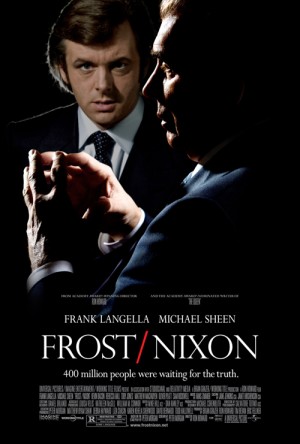 With all of the online video services now offering much of the same (
With all of the online video services now offering much of the same (
 Moments ago,
Moments ago, 
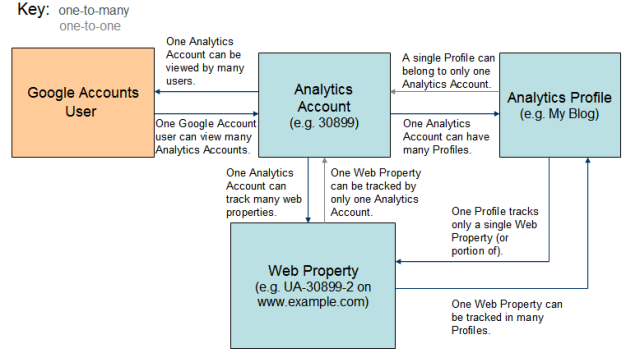
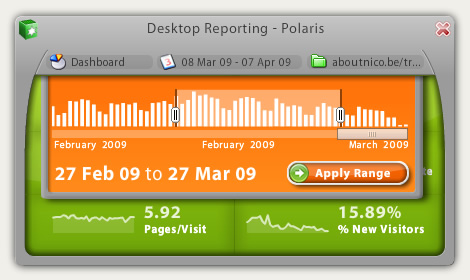
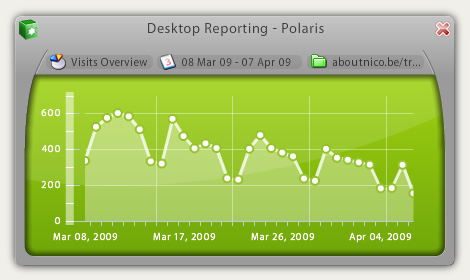


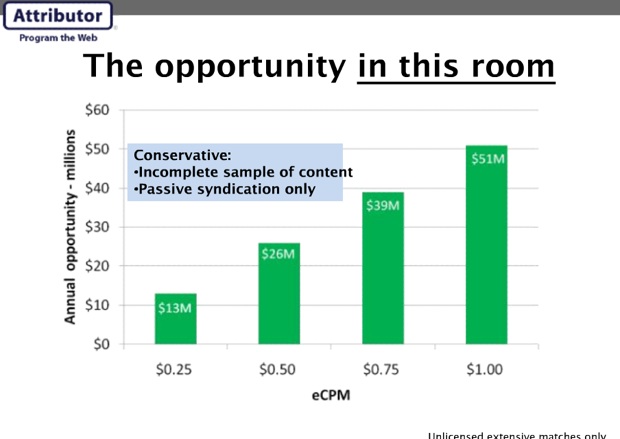
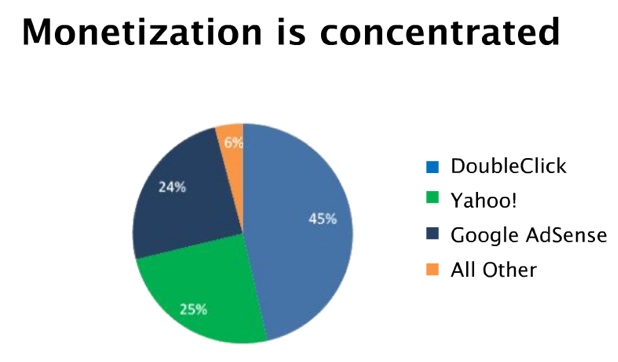
 Yesterday, Google
Yesterday, Google 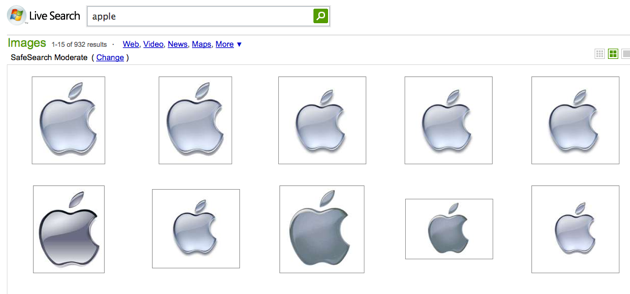
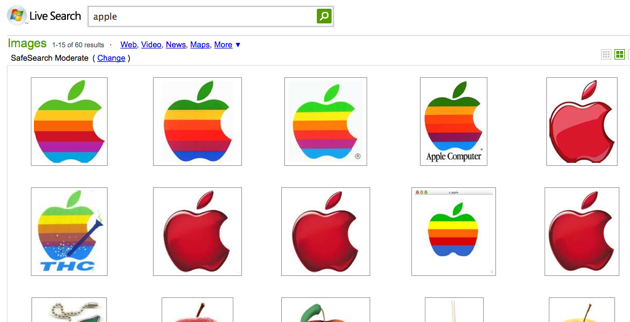
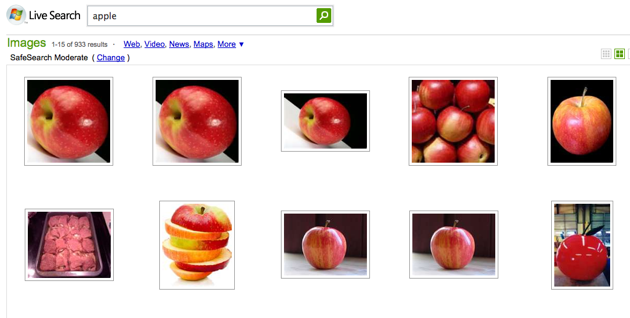
 Microsoft’s social networking strategy around Windows Live gets a little more meat on the bone today. In November they announced a new strategy that
Microsoft’s social networking strategy around Windows Live gets a little more meat on the bone today. In November they announced a new strategy that 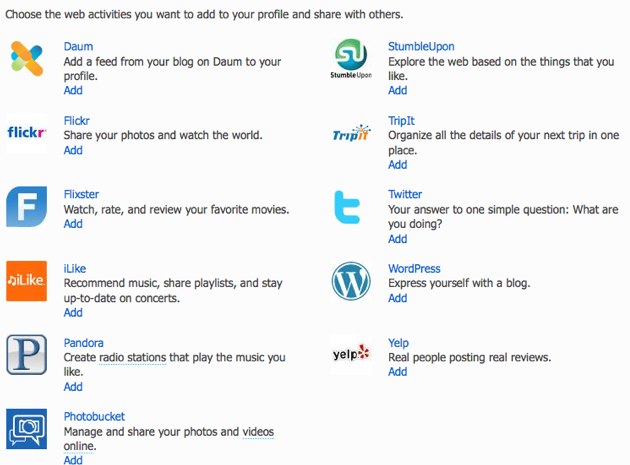
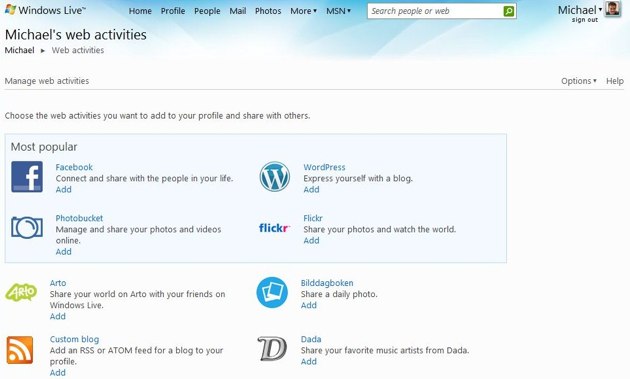






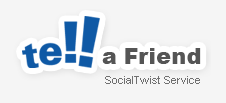 Later today at the
Later today at the 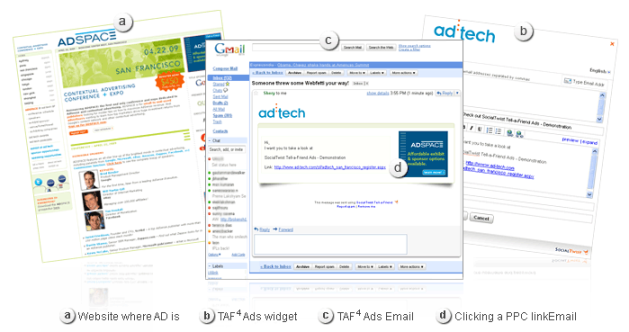
 Israeli startup
Israeli startup 
 We’ll say it right off the bat: what the hell took Microsoft so long? Years after Yahoo and Google integrated web IM features into their free webmail services (Yahoo Messenger in Yahoo Mail and Gtalk in Gmail, respectively), Redmond is finally enabling users to log into their Hotmail accounts and converse with their contacts over instant messaging directly without the need to log on to Windows Live Messenger separately, or to even have the program installed altogether.
We’ll say it right off the bat: what the hell took Microsoft so long? Years after Yahoo and Google integrated web IM features into their free webmail services (Yahoo Messenger in Yahoo Mail and Gtalk in Gmail, respectively), Redmond is finally enabling users to log into their Hotmail accounts and converse with their contacts over instant messaging directly without the need to log on to Windows Live Messenger separately, or to even have the program installed altogether.
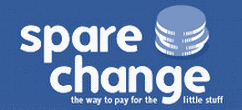



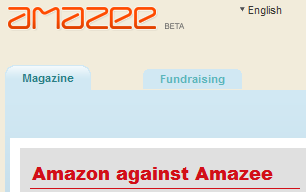 Online retail juggernaut
Online retail juggernaut  Here you’ll find the live video stream from Geek'n Rolla, a day-long conference created by
Here you’ll find the live video stream from Geek'n Rolla, a day-long conference created by 
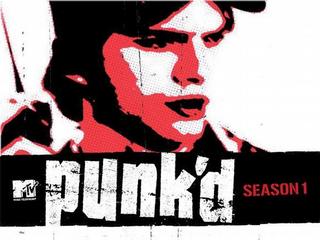 “Punked” is one of those words that started out as a slang term, but was taken to a whole new level by a pop culture moment — in this case, the MTV show Punk’d. But as quickly as it heated up in 2003, it quickly burned out, lasting just 4 years. But the company behind it, Ashton Kutcher’s
“Punked” is one of those words that started out as a slang term, but was taken to a whole new level by a pop culture moment — in this case, the MTV show Punk’d. But as quickly as it heated up in 2003, it quickly burned out, lasting just 4 years. But the company behind it, Ashton Kutcher’s 
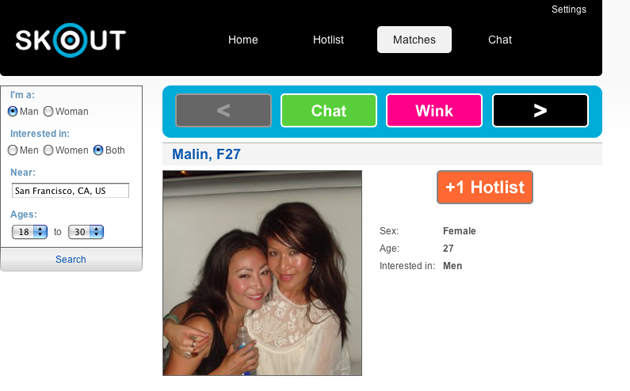
No comments:
Post a Comment